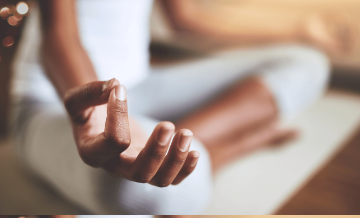The essence and distinctions between Samatha and Vipassana meditation techniques
The essence and distinctions between Samatha and Vipassana meditation techniques
Samatha, often referred to as “peaceful abiding” or “tranquility,” serves as an introduction to Vipassana, focusing on stabilizing the mind through steady awareness. The choice between them depends on individual goals—calmness for Samatha and clear perception for Vipassana. By engaging in these practices, practitioners gain equanimity, acceptance, and a transformative understanding of reality.
Samatha Meditation: A Preparation Stage for Vipassana Meditation
Samatha, which translates to “peaceful abiding” or “tranquility,” is also known as mindfulness or concentration meditation. This practice serves as a crucial introduction to the path of Vipassana, or insight meditation.
The essence of Samatha meditation lies in stabilizing the mind through cultivating a steady awareness of the meditation object. The traditional approach involves using various supports or anchors during practice. With time, this evolves into meditation without external aids, focusing on emptiness itself through open awareness.
Engaging in Samatha meditation grants us an unfiltered experience of our own minds. As we delve into this practice, we come to recognize that our minds are a tapestry of thoughts, some contributing to our well-being and self-discovery, while others do not. It’s important to acknowledge that the bustling nature of the mind is perfectly natural.
Consistent practice of Samatha meditation gradually soothes our thoughts and emotions. This leads to a tranquil state of mind, allowing us to peacefully coexist with our thoughts.
This stable awareness sets the stage for Vipassana practice, where we delve into the essence of the “mind” itself by investigating the nature of thoughts. In the Vajrayana Buddhist tradition, the ultimate aspiration involves merging calm abiding and insightful wisdom, unveiling the true essence of the mind.
Guided Samatha Meditation of Vajrayana Buddhism:
-
- Adjust your body into a comfortable position and begin the practice by becoming aware of your breath. Notice each inhalation and exhalation.
- While observing the breath, make an effort to release any arising thoughts. Whenever you find yourself distracted by a thought, gently guide your focus back to the breath. Repeat this process consistently.
- Gradually, as you exhale, become attuned to your breath flowing away and dissolving into the surrounding space. Cultivate the same awareness during inhalation.
- Now, as you slow down, let your awareness blend with the expansive space accompanying each breath, both during inhalation and exhalation.
- To delve deeper into the practice, try a breath-holding period after inhalation, lasting a few seconds, before exhaling. This divides the breath into three distinct phases: inhalation, retention, and exhalation. Maintain this pattern.
- During inhalation, intone the sound “OM.” While holding your breath, chant “AH.” As you exhale, resonate with “HUM.” These sacred syllables aid in fortifying awareness and are believed to facilitate mental purification.
- As you proceed with the exhalation, allow yourself to relax even further. Maintain your mindful awareness practice, releasing thoughts and consistently returning to the breath. Dedicate 15 minutes daily to this routine, ideally in the morning.

What is Vipassana Meditation?
Vipassana (Vipashyana) means “to see things in an extraordinary way”—not as we think they are or want them to be, but “as they truly are in and of themselves.” It is a state of pure awareness.
Vipassana involves a form of mental training that guides you to experience the present moment as it is. This process serves as a journey of self-discovery, involving participatory observation of your own experiences as they unfold.
Vipassana is characterized by its gentle yet highly comprehensive approach. Rooted in ancient tradition, it is a structured system for training the mind, encompassing exercises designed to enhance awareness throughout every facet of life, including activities like eating, listening, resting, and sleeping.
Essentially, Vipassana meditation revolves around retraining the mind. The desired outcome is a state of complete awareness, where you are attuned to every nuance within your perceptual realm—experiencing events exactly as they unfold, precisely when they occur. This leads to unbroken awareness in the present moment.
Why choose inhales and exhales as the primary objects of meditation?
The chosen object of concentration should be portable, easily accessible, and economical. It must also not entangle us in the very mental states we seek to liberate ourselves from—like greed, anger, and delusion.
Breathing meets and surpasses these criteria. It’s a shared experience among all human beings. A constant companion, always present, from birth to death, and it comes at no cost.
Through mindfulness, we gradually unveil our true selves beneath the facade of ego. Life’s reality becomes evident. It’s not just a series of highs and lows, sweet moments and reprimands. That’s an illusion. Life possesses a much richer texture, awaiting our observant and correct perspective.
By practicing Vipassana you will finally understand what the experience of being alive really is.
How many types of Vipassana techniques are there?
There are two primary Vipassana meditation techniques: Vipassana by Goenka and Mahamudra Vipassana in Tibetan Buddhism.
How to Practice Vipassana
- Find a comfortable seated position, legs crossed (leg position isn’t crucial as you’re starting your meditation journey). Ensure your back is straight to avoid discomfort.
- Set a meditation session time, which can range from 5 to 60 minutes.
- Relax your body and let it settle as you begin your meditation.
- Once you feel settled, focus your attention on the “triangle area” of your nose and nostrils. Choose the sensation of breathing as your main meditation object.
- Constantly observe your breath, both inhaling and exhaling, without forcing it. Pay attention to the physical sensation of air passing through your nostrils.
- It’s natural for the mind to wander; gently and firmly guide it back to the sensation of breath without judgment.
- By concentrating on your breath, you’re preparing for the next stage of Vipassana meditation, where you’ll extend your meditation time and focus on bodily sensations. Start from your head, then proceed to the face, neck, shoulders, front, belly, back, spine, right arm, fingers, left arm, fingers, and so on. Keep going until you’ve observed sensations throughout your entire body. Begin again, from feet to head, repeating the process.
- Upon completing this, a deep calm will encompass your body and mind, a state of tranquility that must be experienced to be truly understood. This is a significant goal that takes practice and starts with small steps. Begin by becoming fully aware of a single unit of time—the duration of one inhalation. When you achieve this, you’re embarking on a transformative journey.
If you are a beginner please check this link – Meditation for Beginners
Comparing Two Types of Meditation – Samatha, and Vipassana
People who start to delve a little more deeply into mindfulness will discover that different terms are used for different kinds of meditation. In this article, we will focus specifically on Samatha and Vipassana meditations. What are these meditations, what is the difference between them, and which one should a person ideally practice?
In short, Samatha meditation is focused on calming the mind, whilst Vipassana meditation is focused on insight or clearing the mind.
Both meditation techniques have specific outcomes, and the choice of which one to practice depends on your individual goals
Should I Practice Samatha or Vipassana?
Choosing the types of meditation to practice depends on the desired outcome or goal. If your primary goal is calmness or tranquility, opt for Samatha. On the other hand, if insight (clear perception or clearing the mind) is what you seek, then Vipassana meditation is your choice.
Vipassana meditation is tailored for clear perception and consequently, release. From a philosophical standpoint, Vipassana meditation facilitates this release by concentrating on observing actual reality. Solely pursuing meditation for calmness might not address underlying mental issues or unresolved past matters.
As Buddhism teaches, by employing meditation to observe reality, you gradually attain a clearer perception of its impermanence. Focusing on the breath or other phenomena serves as a way to comprehend reality and life on a broader level.
Benefits of Meditation
Through meditation, we cultivate equanimity, becoming less perturbed by situations that may have previously caused us stress.

This non-judgmental observation of reality also nurtures acceptance, leading us to reconcile with and find peace in past events. By practicing mindful awareness through meditation, we learn to embrace reality as it is, reducing the urge to constantly revisit the past with a mindset of ‘if only’ or a desire for change. Gradually, we learn the art of letting go.
By drawing out these distinctions, it becomes evident that for most individuals, Vipassana is the more effective meditation for achieving their desired outcomes.
A byproduct of Vipassana meditation is an increased sense of calmness, although it differs from Samatha meditation, where tranquility isn’t the primary focus or goal.




